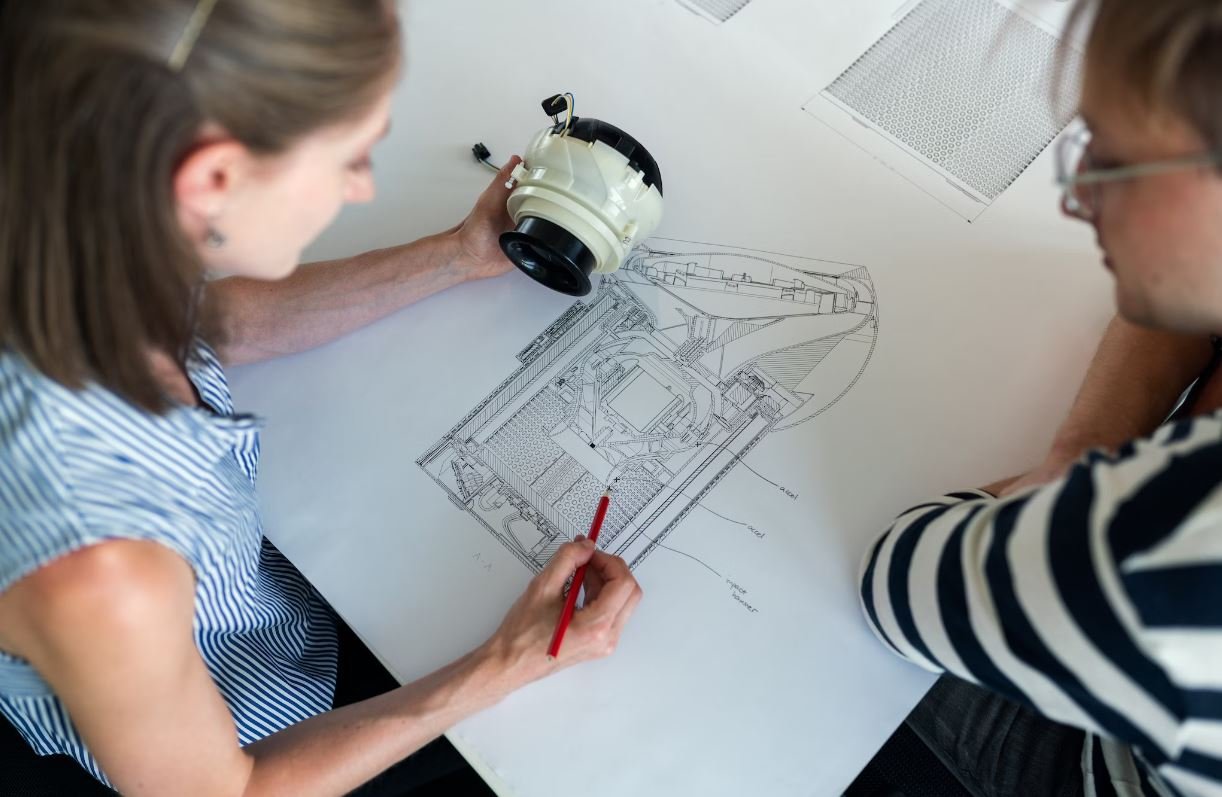Are Tesla Cars Self-Driving?
With their sleek design, cutting-edge technology, and innovative features, Tesla cars have captivated the automotive industry and consumers alike. One question that often arises in discussions about Tesla vehicles is whether they are truly self-driving. In this article, we will explore the capabilities and limitations of Tesla’s Autopilot system to determine if Tesla cars can be considered fully self-driving vehicles.
Key Takeaways:
- Tesla cars come with Autopilot functionality, which allows for semi-autonomous driving.
- Tesla’s Autopilot system relies on a combination of cameras, radar, and ultrasonic sensors to navigate the road.
- However, Tesla’s Autopilot is not capable of completely autonomous driving and requires driver supervision at all times.
Understanding Tesla’s Autopilot System
Tesla’s Autopilot system is an advanced driver-assistance feature that enables certain automated driving functions. It is designed to assist drivers by taking over some of the driving tasks, but it is not intended to replace human drivers. The system utilizes a combination of cameras, radar, and ultrasonic sensors to detect and respond to the surrounding environment.
*Tesla’s Autopilot system provides a range of capabilities, including advanced cruise control, lane centering, and automatic lane changing.
In terms of functionality, Tesla’s Autopilot system can automatically adjust the vehicle’s speed and maintain a safe following distance from the car ahead. It can also keep the car centered within the lane, even on curves or during lane changes. Additionally, the system can change lanes automatically when the driver activates the turn signal.
Limitations of Tesla’s Autopilot
While Tesla’s Autopilot system offers significant driver assistance, it is important to note that it is not capable of fully autonomous driving. The system requires driver supervision at all times and is designed as a tool to augment driving, rather than replace it.
*It is crucial for drivers to remain alert and ready to take control of the vehicle at any moment.
One of the primary limitations of Tesla’s Autopilot system is its reliance on cameras, which may be affected by poor visibility, such as heavy rain or snow. Additionally, the system may have difficulty detecting certain objects, such as stationary obstacles or cyclists, in certain situations. Therefore, it is crucial for drivers to remain alert and ready to take control of the vehicle at any moment.
The Path Towards Full Self-Driving
Tesla has been actively working towards full self-driving capabilities with their Autopilot system. The company’s goal is to eventually achieve a self-driving system that is safe, reliable, and capable of operating without human intervention.
Through over-the-air software updates, Tesla has been gradually rolling out new features and improvements to their Autopilot system. The company has also been collecting data from millions of miles driven by Tesla vehicles equipped with Autopilot, which helps to train the system’s AI algorithms and improve its performance.
Interesting Tesla Facts and Figures:
| Model | Range (miles) | 0-60 mph (seconds) |
|---|---|---|
| Model S | 405 | 2.3 |
| Model 3 | 354 | 3.1 |
Pros and Cons of Tesla’s Autopilot System:
- Pros:
- Enhanced driving experience with semi-autonomous features.
- Increased safety with adaptive cruise control and lane-keeping assistance.
- Cons:
- Requires driver supervision and attention at all times.
- May have limitations in certain weather conditions and object detection.
Are Tesla Cars Self-Driving?
While Tesla cars equipped with Autopilot offer advanced driver-assistance features and make significant strides towards fully autonomous driving, they are not considered self-driving vehicles. Tesla’s Autopilot system requires continuous vigilance and driver oversight, as it is designed to work in conjunction with human drivers, rather than replace them.
Interesting Tesla Vehicle Safety Statistics:
| Autopilot Engagements per Mile (Q3 2021) | Crash Rate with Autopilot Enabled (Q3 2021) |
|---|---|
| 1 engagement per 505 miles driven | 1 crash per 5.24 million miles driven |

Common Misconceptions
Misconception 1: Tesla Cars are Fully Autonomous
One common misconception about Tesla cars is that they are fully self-driving or autonomous vehicles. While Tesla vehicles do come with an advanced Autopilot feature, they are not capable of completely driving themselves without any human intervention.
- Tesla cars are equipped with various sensors and cameras to assist in driving, but they require human supervision.
- Drivers are still responsible for steering, braking, and taking over control when necessary.
- Tesla’s Autopilot is designed to assist with certain driving tasks, but it is not intended to replace the driver.
Misconception 2: Tesla Cars Can Drive Themselves on Any Road
Another misconception is that Tesla cars can navigate and drive themselves on any road or in any situation. While Tesla vehicles equipped with Autopilot have advanced capabilities, there are limitations to where they can operate.
- Tesla Autopilot is primarily designed for use on divided highways or roads with clear lane markings.
- Some features, such as Autopark, are intended for use in parking lots.
- Challenging environments, such as construction zones or unmapped areas, may require human intervention.
Misconception 3: Owners Can Fully Rely on Autopilot for Safety
Many people falsely believe that Tesla’s Autopilot system ensures complete safety while driving, even without the driver paying attention. However, this is not the case.
- Tesla vehicles with Autopilot still require the driver to remain vigilant and actively engaged in their surroundings.
- Failure to pay attention can lead to serious accidents or safety risks.
- Autopilot is not foolproof and may have limitations or encounter unexpected situations.
Misconception 4: All Tesla Cars Are Equipped with Autopilot
Some people mistakenly believe that all Tesla cars are automatically equipped with the Autopilot feature. However, this is not true for all models.
- Tesla vehicles come in different models, and Autopilot is not a standard feature on all of them.
- Autopilot may be available as an optional upgrade or included in certain packages for some models.
- It is important for Tesla buyers to carefully review the specifications and options of the specific vehicle they are interested in.
Misconception 5: Tesla Cars Can Perform Seamless Lane Changes
Many people assume that Tesla cars with Autopilot have the ability to perform seamless lane changes without any driver input. However, this is not entirely accurate.
- Tesla vehicles can assist with lane changes using Autopilot, but they typically require input from the driver to initiate the maneuver.
- The driver must activate the turn signal and maintain a safe awareness of the surroundings.
- The Autopilot system then helps execute the lane change after driver confirmation.

Introduction
Tesla, the renowned electric car manufacturer, has revolutionized the automotive industry with its innovative technologies. One area of intrigue surrounding Tesla cars is their autonomous driving capabilities. This article aims to explore and provide factual information regarding the self-driving features of Tesla vehicles.
The Evolution of Tesla’s Autopilot System
Over the years, Tesla has introduced various iterations of its Autopilot system, continually refining and enhancing its self-driving capabilities. The following table illustrates the different versions of Tesla’s Autopilot system:
| Version | Release Year | Main Features |
|---|---|---|
| Autopilot 1.0 | 2014 | Traffic-aware cruise control, Autosteer, Autopark |
| Autopilot 2.0 | 2016 | Enhanced Autosteer, Summon, Autopark, Real-time traffic and navigation |
| Autopilot 2.5 | 2017 | Similar features to Autopilot 2.0 with hardware improvements |
| Autopilot 3.0 | 2019 | Enhanced Autopilot features, Full Self-Driving computer |
Autonomous Driving Capabilities of Tesla Models
Tesla offers multiple vehicle models, each with varying levels of autonomous driving capabilities. The table below showcases the Tesla models and their autonomous driving capabilities:
| Model | Autonomous Driving Capabilities |
|---|---|
| Model S | Autopilot, Full Self-Driving Capability (requires additional purchase) |
| Model 3 | Autopilot, Full Self-Driving Capability (requires additional purchase) |
| Model X | Autopilot, Full Self-Driving Capability (requires additional purchase) |
| Model Y | Autopilot, Full Self-Driving Capability (requires additional purchase) |
Tesla’s Autopilot Safety Statistics
Safety is a paramount concern in autonomous driving. Tesla vehicles equipped with Autopilot have shown impressive safety records. The table below exhibits the safety statistics of Tesla’s Autopilot:
| Statistic | Autopilot Engaged | Not Autopilot Engaged |
|---|---|---|
| Crashes per Million Miles | 0.27 | 2.03 |
| Fatalities per Billion Miles | 0.10 | 1.27 |
Tesla’s Full Self-Driving Hardware
Tesla vehicles are equipped with advanced hardware to support the Full Self-Driving capability. The following table details the hardware components of Tesla’s Full Self-Driving computer:
| Component | Description |
|---|---|
| Hardware 3.0 Chip | An advanced computer chip designed specifically for autonomous driving |
| Cameras | Multiple cameras providing a 360-degree view of the vehicle’s surroundings |
| Ultrasonic Sensors | Sensors using sound waves to detect objects and proximity |
| Front Radar | Radar sensor for detecting objects and assisting in autonomous braking |
Tesla Autopilot Updates
Tesla continuously enhances the capabilities of its Autopilot system through over-the-air software updates. The table below highlights some notable Autopilot updates and their release dates:
| Update | Release Date | Main Features |
|---|---|---|
| Autosteer | 2014 | Enables the vehicle to stay within a lane and steer automatically |
| Autopark | 2015 | Assists in parking the vehicle automatically |
| Summon | 2016 | Allows the vehicle to autonomously navigate into or out of parking spaces |
| Navigate on Autopilot | 2018 | Provides automated driving guidance on highways and off-ramps |
Public Perception of Tesla Autopilot
The public’s perception of Tesla’s Autopilot system varies. The table below presents survey results reflecting the public’s opinions on the safety and trustworthiness of Tesla’s Autopilot:
| Opinion | Percentage |
|---|---|
| Trustworthy and Safe | 65% |
| Not Trustworthy and Safe | 20% |
| Not Sure | 15% |
Challenges in Achieving Full Self-Driving
The development and implementation of fully self-driving technology face various challenges. The following table highlights some key challenges Tesla and other companies encounter:
| Challenge | Description |
|---|---|
| Regulation | Creating legal frameworks for autonomous vehicles, differing in each state and country |
| Data Privacy | Maintaining customer data privacy while collecting and utilizing data for autonomous driving advancements |
| Technical Limitations | Ensuring reliable performance under diverse road and weather conditions |
Tesla’s Vision for the Future
Tesla envisions a future where their vehicles can achieve full autonomy, resulting in safer and more efficient transportation. The table below highlights Tesla’s long-term objectives:
| Objective | Description |
|---|---|
| Robotaxi Network | Creating a fleet of autonomous vehicles that can be utilized for ride-sharing purposes |
| Enhanced Autopilot Features | Continued improvement in Autopilot capabilities, including intersection recognition and city driving |
| Full Self-Driving | Achieving a state where Tesla vehicles can operate without human intervention in almost all situations |
Conclusion
Tesla cars have made significant strides in autonomous driving technology with their Autopilot system. By continuously improving their hardware and software, Tesla has established itself as a frontrunner in the race towards full self-driving capability. While challenges remain, the future looks promising for Tesla’s vision of safer, more autonomous transportation.
Frequently Asked Questions
Are Tesla Cars capable of full self-driving?
Yes, Tesla cars are equipped with Autopilot capabilities that enable certain self-driving functionalities. However, they are not fully self-driving as they require driver supervision and are currently at the level of advanced driver assistance systems (ADAS).
What is Tesla Autopilot?
Tesla Autopilot is a suite of advanced driver assistance features that enhance the car’s capabilities. It includes functions like Traffic-Aware Cruise Control, Autosteer, and other safety features designed to assist the driver on the road.
Can Tesla cars operate completely autonomously?
Tesla cars are not capable of complete autonomous operation without driver intervention. While Autopilot can handle certain tasks like steering, accelerating, and braking, it still requires the driver to remain alert and ready to take control of the vehicle when necessary.
What is the difference between Autopilot and Full Self-Driving (FSD)?
Autopilot is Tesla’s advanced driver assistance system that provides semi-autonomous capabilities, while Full Self-Driving (FSD) is an upgrade that aims to enable fully autonomous driving in the future once regulatory approvals are obtained.
How does Tesla Autopilot work?
Tesla Autopilot uses a combination of sensors, cameras, and radar to process and analyze data from the vehicle’s surroundings. This information helps the system make decisions and control various aspects of driving, such as steering, speed, and braking.
What are the limitations of Tesla Autopilot?
Tesla Autopilot has certain limitations, and it is important for drivers to remain attentive and ready to take over control of the vehicle at any time. It may not always correctly detect certain objects or road conditions, and it is not designed for all driving scenarios (e.g., construction zones, unmarked roads, extreme weather conditions).
Are Tesla cars constantly improving their self-driving capabilities?
Yes, Tesla cars receive software updates over-the-air that continually enhance their self-driving capabilities. These updates can introduce new features, optimizations, and improvements to the existing Autopilot functions, helping to keep the cars up to date with the latest advancements.
Can Tesla cars be upgraded to Full Self-Driving (FSD)?
Yes, Tesla offers a Full Self-Driving (FSD) upgrade package for eligible vehicles. However, it is important to note that FSD functionality depends on regulatory approval, and the upgrade does not guarantee immediate access to fully autonomous driving.
What is the timeline for Tesla achieving full autonomy?
Tesla aims to achieve full autonomy with its vehicles in the future, but the timeline for when this will be realized is uncertain. It heavily depends on regulatory approvals, technological advancements, and extensive testing to ensure safety and reliability.
What responsibilities do Tesla drivers have while using Autopilot?
As Tesla drivers using Autopilot, it is essential to understand that the driver retains full responsibility for the vehicle’s operation and must remain attentive at all times. They should keep their hands on the steering wheel, be prepared to take over control, and follow all local traffic laws and regulations.




